
TOP places to visit in Paris
Paris is a city that fascinates and captivates at first sight: the capital of France, the center of world culture, fashion and art. Located on the banks of the picturesque Seine River, Paris impresses with its luxurious architecture. From the majestic Louvre to the romantic streets of Montmartre, every corner of the city is full of history and charm.
Here you can stroll along the Champs Elysees, admire the view of the Eiffel Tower, or sit in a cozy courtyard while tasting fresh pastries or local wine.
In this article:
- Trains from Europe to Paris
- Trains from Paris to other cities in France
- Seine
- Eiffel Tower
- City Island
- The Louvre
- The Pantheon
- Montmartre
- Champs Elysees
- Arc de Triomphe
- Notre Dame de Paris
- The shore of the Saint Martin Canal
- Passage de la Madeleine
- Versailles Palace (Versailles Palace)
- Pont Alexandre III Bridge
- Napoleon's Mausoleum and Museum of the Army
- Jardin des Tuileries
- The traditional dishes you can taste in Paris

Trains from Europe to Paris
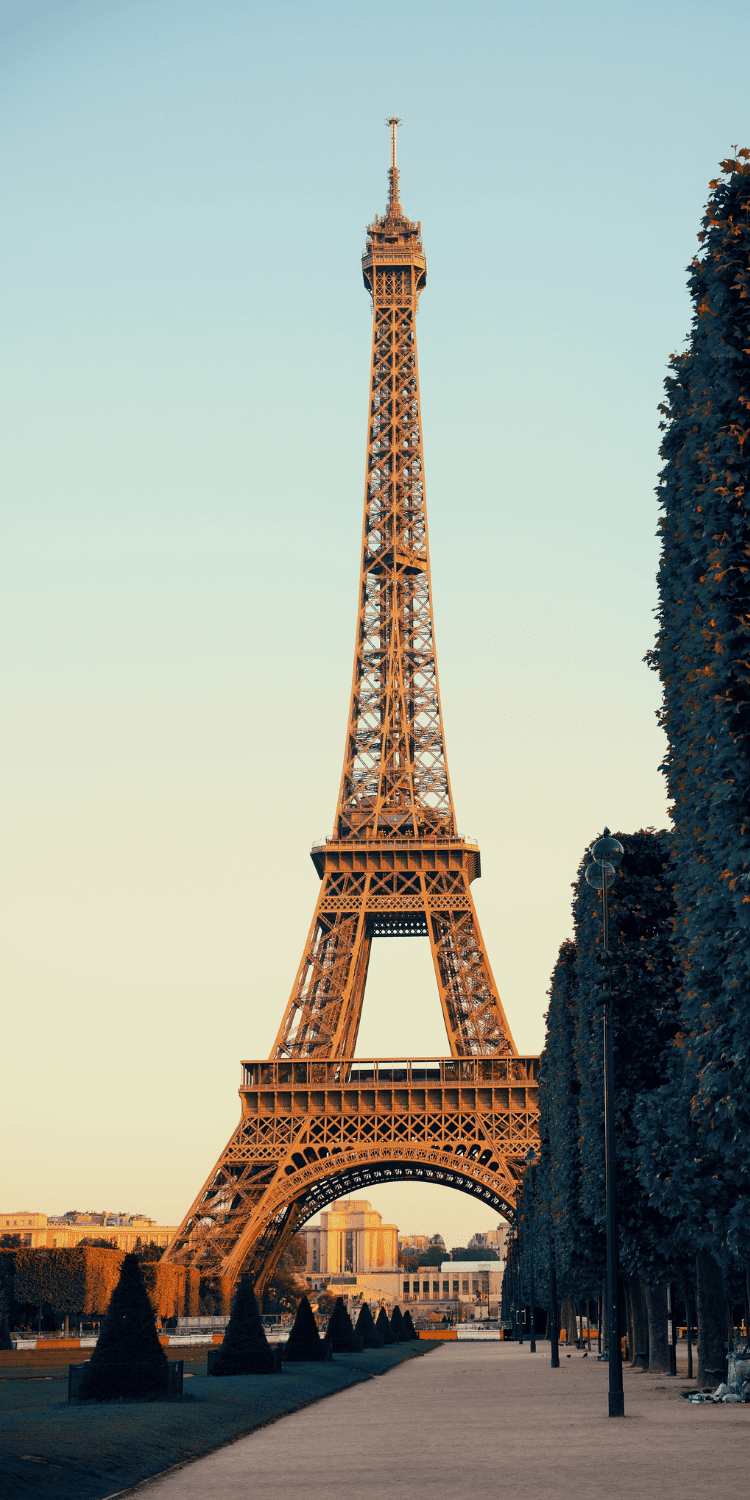
Where to stay in Paris
Discover the best places to stay in Paris for your next city break! Choosing the perfect accommodation is crucial in providing a safe, welcoming, and comfortable environment for travelers - especially for first-timers.
Paris offers many accommodation options that will meet the expectations of every traveler. When choosing accommodation, pay attention to the location, room standard and customer reviews. The best solution is to choose accommodation close to the main attractions, which will make it easier for you to explore the city.
SearchTrains from Paris to other cities in France
Seine
The Seine is one of the most famous rivers in Paris and plays an important role in the life of the city. It flows through the center of the French capital, dividing it into two parts - the Right and Left banks.
Its banks and embankments (Quais de Seine) are favorite places for recreation and walks for locals and tourists alike. Here you can enjoy magnificent views of Paris's landmarks, such as Notre Dame de Paris, the Louvre, and the Eiffel Tower.
The embankments can be explored on foot or by bicycle, but river cruises are particularly popular, offering panoramic views of Paris.

Eiffel Tower
The Eiffel Tower is the undisputed symbol of France and one of the most recognizable landmarks in the world. Designed by engineer Gustave Eiffel, this iron structure was built for the 1889 World's Fair and has since become an integral part of the Parisian landscape.
Standing 324 meters high, the Eiffel Tower towers over the city, offering breathtaking panoramic views of Paris from its observation decks. Every year, millions of tourists climb the mountain to see the magnificent views of the French capital from a bird's eye view. There are 1792 steps or elevators leading to the tower.
In the evening twilight, its bright shine turns the city into a fairy-tale landscape where every lantern looks like a star - after sunset, the Eiffel Tower sparkles at the beginning of each hour for 5 minutes.

City Island
The Isle de la Cité is a small island located in the heart of Paris on the Seine River. This historical and architectural gem of a city is of particular importance to France.
The Isle de la Cité is the oldest part of Paris. It was here that the ancient Celtic settlement of Lutetia was founded in the third century BC, which later became the core of modern Paris. The island is home to the city's most important historical monuments, including Notre Dame Cathedral and the Palais de Justice.
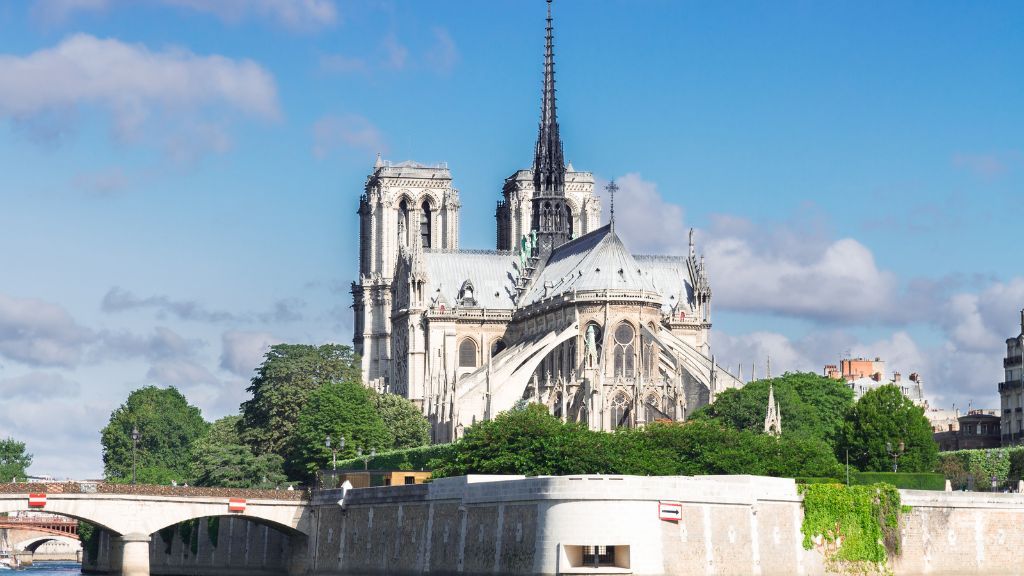
The Louvre
One of the most famous museums in the world, located in the heart of Paris. It is a huge palace complex that has served as the residence of French kings and emperors for centuries. Today, the Louvre impresses with its scale and wealth of exhibits representing different eras and cultures.
The main building of the Louvre impresses with its neoclassical architecture. The central part is occupied by the famous Louvre pyramid, created by Min Pei in 1989. It has become a symbol of the museum and modern Paris. Visitors can enter the Louvre through this glass pyramid, which opens the way to a huge underground lobby.
The Louvre collection is striking in its diversity. Here you can see masterpieces of art from different eras - from ancient Egyptian artifacts to works by great European artists such as Leonardo da Vinci, Rembrandt, and Raphael. Among the most famous exhibits are Leonardo da Vinci's Mona Lisa, Venus of Milo, and Nica of Samothrace.

The Pantheon
The Pantheon in Paris is one of the most famous and impressive architectural monuments of the French capital. It is a majestic building built in the classical style, which was originally a church dedicated to St. Genevieve, the patron saint of Paris, and is now the national pantheon where prominent French figures are buried. Such prominent figures as Voltaire, Rousseau, Hugo, Zola, Marie Curie, and others are buried in the crypts of the Pantheon.
The Pantheon was built in the 18th century by order of Louis XV to commemorate the king's recovery from a serious illness. The architect Jacques-Germain Soufflot created a grandiose neoclassical building with a majestic dome reminiscent of St. Peter's Basilica in Rome. Construction lasted almost 20 years and was completed in 1790.

Montmartre
Montmartre is one of the most famous districts of Paris, located on the hill of the same name.
Montmartre is known for its artistic past. In the XIX century, many famous artists settled here, such as Van Gogh, Picasso, Salvador Dali and others. They created their masterpieces inspired by the beautiful views of Paris from the Montmartre hill.
The heart of Montmartre is the Sacre Coeur Basilica, one of the most famous churches in Paris. Its snow-white domes can be seen from afar, and the observation deck in front of the church offers a breathtaking view of Paris.
The Sacre Coeur Basilica is one of the most famous and recognizable symbols of Paris and is one of the most visited tourist attractions in France.
The construction of the basilica was started in 1875 on the initiative of the French Third Republic as a symbol of atonement for France's defeat in the Franco-Prussian War and the Paris Commune. The architectural style of the basilica combines elements of Romanesque and Byzantine styles, which gives it a unique and majestic look.
The steps leading to the entrance to the basilica are one of the most favorite places for Parisian tourists, as they offer an incredible panoramic view of Paris.

Champs Elysees
The Champs Elysees is one of the most famous and prestigious streets in Paris. This wide, classically decorated street stretches from the Place de la Concorde to the Arc de Triomphe, forming one of the city's most magnificent panoramas.
The history of the Champs Elysees dates back to the beginning of the 17th century, when a garden and walkways were laid out by order of Maria de' Medici. Later, in the XVIII century, the street was expanded and turned into an elite neighborhood where the French aristocracy settled.
Chestnut alleys, fountains, and beautiful French classicist buildings add a special atmosphere to the Champs Elysees. In the evening, the street turns into a bright light show - it is illuminated by thousands of lights, creating an unforgettable experience.
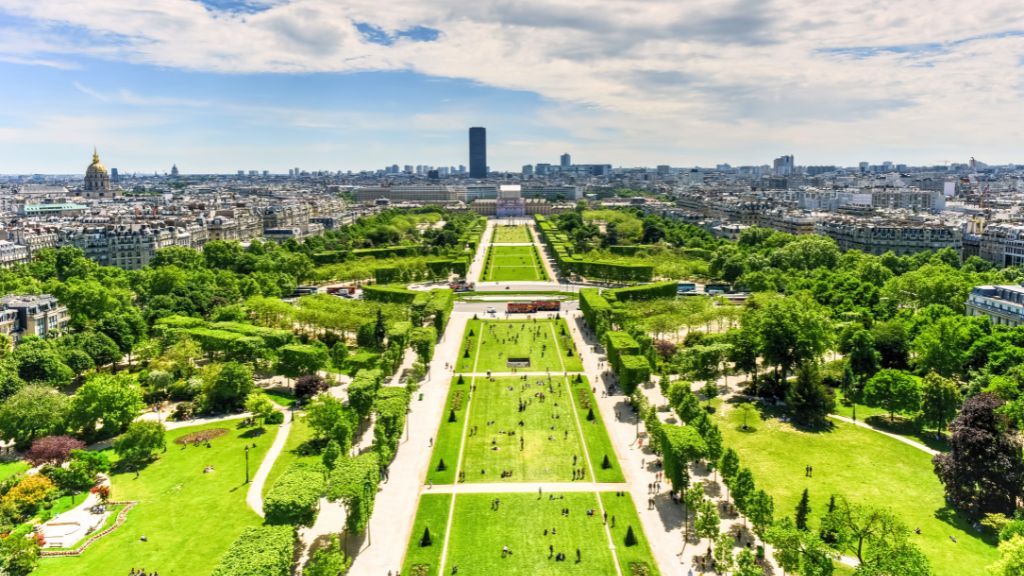
Carnival Museum
The Carnavalet Museum is a museum of Parisian history located in a beautiful 17th century mansion. It is less famous than other museums in Paris, but here you can find interesting information about the development of the city.
Arc de Triomphe
The Arc de Triomphe in Paris is one of the most famous and impressive architectural monuments of the French capital. It was built by order of Napoleon I in honor of the military victories of France.
The arch was completed in 1836 and is located on the Place de la Concorde, in the heart of Paris. It is 50 meters high and 45 meters wide, making it one of the largest triumphal arches in the world. The monumental structure is made in the neoclassical style, with sculptural reliefs depicting battles and other military victories.
The most famous relief is the "March of Triumph" on the western facade of the arch, depicting Napoleon on horseback, surrounded by his generals. Other sculptures tell the story of the courage of French soldiers and the glory of their exploits.
A staircase inside the arch leads to a rooftop observation deck, which offers a magnificent panoramic view of Paris. The Arc de Triomphe has become one of the city's symbols, along with the Eiffel Tower and Notre Dame de Paris. It attracts millions of tourists every year who come to see this monumental piece of French architecture.
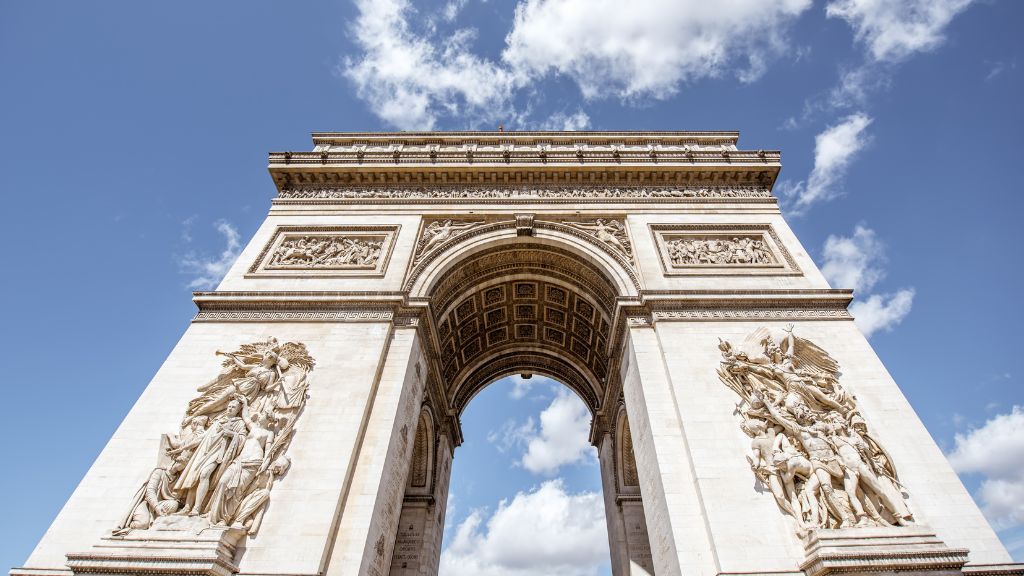
Notre Dame de Paris
Notre Dame de Paris is one of the most famous Gothic churches in the world. Its slender spires and sculptured facades attract millions of tourists every year.
Notre Dame de Paris is one of the most famous and iconic landmarks in Paris. This incredible Gothic cathedral is located on the island of Cité, in the heart of the French capital.
The construction of Notre Dame de Paris began in 1163 by order of Bishop Maurice de Sully and lasted about 200 years. The cathedral is a striking example of French Gothic architecture with its steep spires, intricate sculptures and impressive stained glass windows.
The most iconic part of the cathedral is its facade with three portals decorated with sculptures of biblical scenes and statues of saints. The central portal depicting the Last Judgment is particularly impressive. Above the entrance to the cathedral stands a majestic bell known as Emanuel, which weighs more than 13 tons.
A tragic fire in 2019 caused significant damage, but thanks to the efforts of restorers, the cathedral is regaining its majesty and glory.
Walking along the narrow cobblestone streets of the island, you can feel the unique atmosphere of ancient Paris. There are houses of the twelfth and seventeenth centuries, cafes and restaurants that add a special charm and coziness to the City Island.
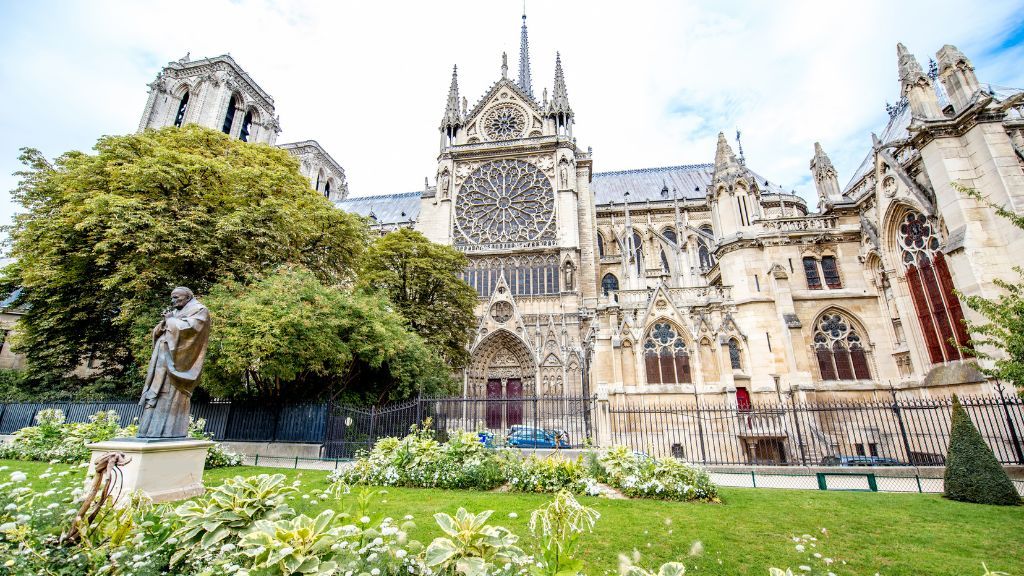
The shore of the Saint Martin Canal
Located in the 10th arrondissement of the French capital, this canal is one of the most important waterways in the city. Along the banks of the Canal Saint-Martin there are numerous cafes, restaurants and shops that create a cozy and relaxing atmosphere. A walk along the canal allows you to enjoy magnificent views of old buildings, bridges spanning the water and green spaces.
In winter, the canal bank becomes a place of winter entertainment, where you can go ice skating or just enjoy a cup of hot chocolate in one of the cozy cafes. And in summer, it's a real bustle of life - street musicians, artists, street vendors and numerous vacationers strolling, sitting on benches or relaxing on the grass.

Passage de la Madeleine
The Passage de la Madeleine is a hidden pedestrian passage in the center of Paris that connects the Boulevard de la Madeleine and Rue Saint-Honoré. It is a picturesque place where you can find shops, cafes and galleries in the style of the 19th century.
The passage is a glass arcade gallery surrounded on both sides by two-story neoclassical buildings. The entrance to the passage is decorated with a majestic pediment with columns. Inside, the passage impresses with its high ceilings, marble floors and beautiful shop windows. This is one of those places in Paris that are definitely worth a visit to feel the spirit of the city and immerse yourself in its magical atmosphere.
Versailles Palace (Versailles Palace)
Versailles is one of the most famous and beautiful places in Paris. It is a majestic palace and magnificent gardens that are a testament to the greatness and power of France in the era of Louis XIV.
The Palace of Versailles was built in the 17th century as the residence of the French kings. Its architecture impresses with its grandeur and luxury. Huge halls with luxurious finishes, gilding, frescoes on the ceilings, beautiful furniture and paintings create an atmosphere of luxury and grandeur. The Mirror Hall and the Royal Chapel are particularly impressive.
The palace is surrounded by gardens of incredible beauty, covering an area of about 800 hectares. Here you can find fountains, sculptures, swimming pools, as well as beautiful flower beds and alleys. The most famous element of the Versailles gardens are the fountains, which impress with their scale and beauty.

Pont Alexandre III Bridge
Pont Alexandre III is one of the most elegant and extravagant bridges in Paris. This bridge was built in the early 20th century in the Baroque style and connects the Champs Elysees on the right bank with the House of Invalids on the left.
The Pont Alexandre III is considered one of the most outstanding examples of bridge construction in the Art Nouveau style. The bridge impresses with its luxurious decorations, gilded lanterns and decorative elements. It looks especially beautiful in the evening.
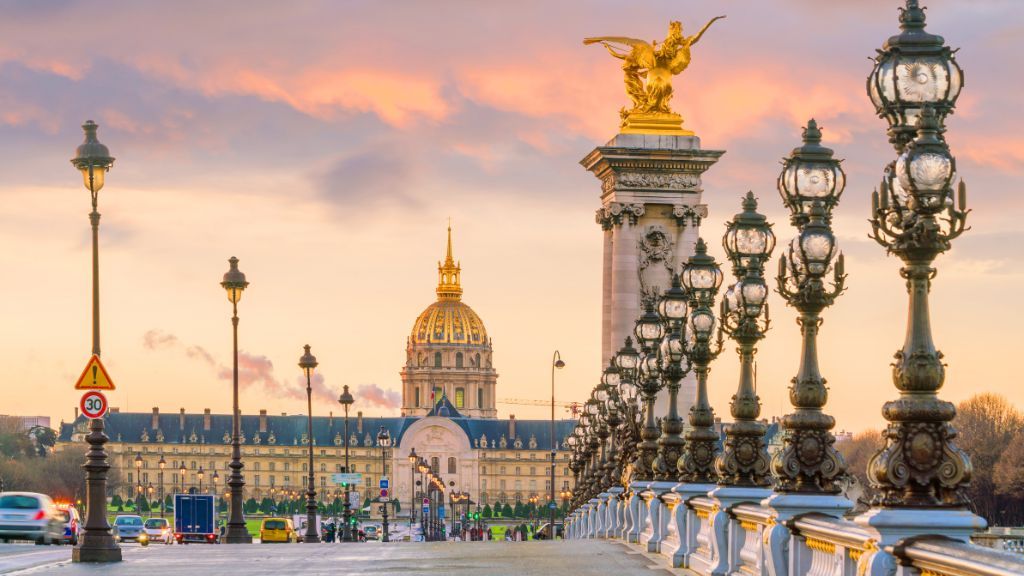
Latin Quarter
In the Latin Quarter, among the cozy cafes and bookstores, you will find yourself in another dimension - the world of students, intellectuals and dreamers, where the most daring ideas are born. Here, every street and alley is a separate story full of romance and mystery.
Napoleon's Mausoleum and Museum of the Army
Napoleon's Tomb & Army Museum in Paris is a tourist attraction that attracts millions of visitors every year. It is part of the complex of the House of the Invalids, a monumental palace built in the 17th century to provide housing for army veterans.
Napoleon's Mausoleum is a grandiose dome-shaped monument where the body of Napoleon Bonaparte, one of the greatest military leaders in history, is buried. The mausoleum impresses with its majestic size, gilded and marble interiors. Visitors can see Napoleon's sarcophagus standing in the center of the rotunda under a majestic dome.
Next to the mausoleum is the Army Museum, which houses a rich collection of historical military equipment, weapons, uniforms, and other artifacts related to the history of the French army. Here you can see tanks, cannons, airplanes, and learn about the most important battles in which France participated.
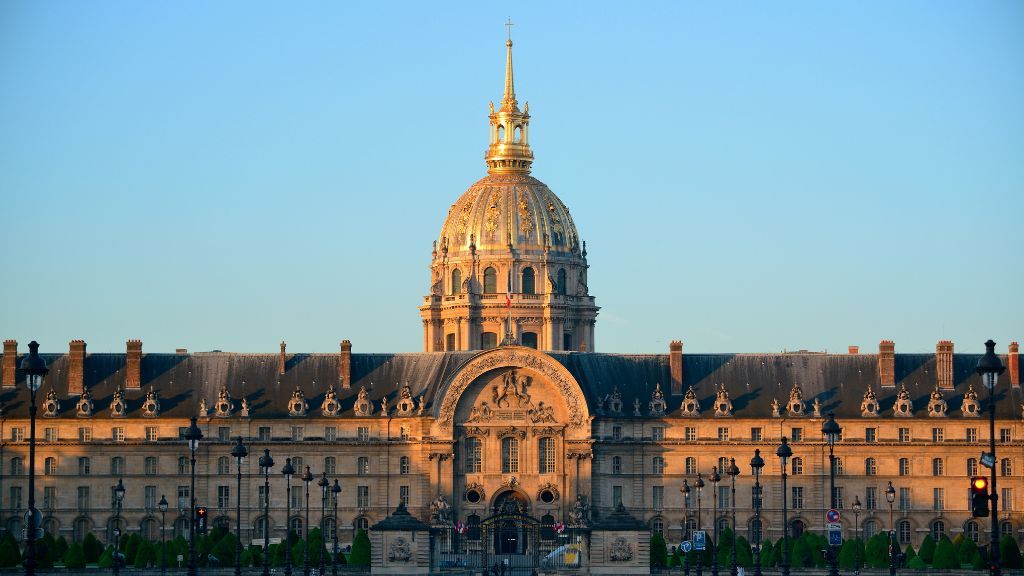
Jardin des Tuileries
The Jardin des Tuileries is one of the most famous and prominent parks in Paris, located between the Louvre and Place de la Concorde.
The history of the Jardin des Tuileries dates back to the 16th century, when a brick warehouse (tuileries) was located on this site. Later, in 1564, Queen Catherine de Medici ordered the creation of a park area for her new Tuileries Palace. Over the next centuries, the garden was constantly being developed and updated.
Today, the Tuileries Garden covers an area of more than 25 hectares and is famous for its alleys, fountains, sculptures, and magnificent views of the Louvre and the Champs Elysees.
The main highlight of the garden is geometric flower parterres, neatly trimmed trees, and magnificent fountains. You can see many statues and other artworks decorating the garden.
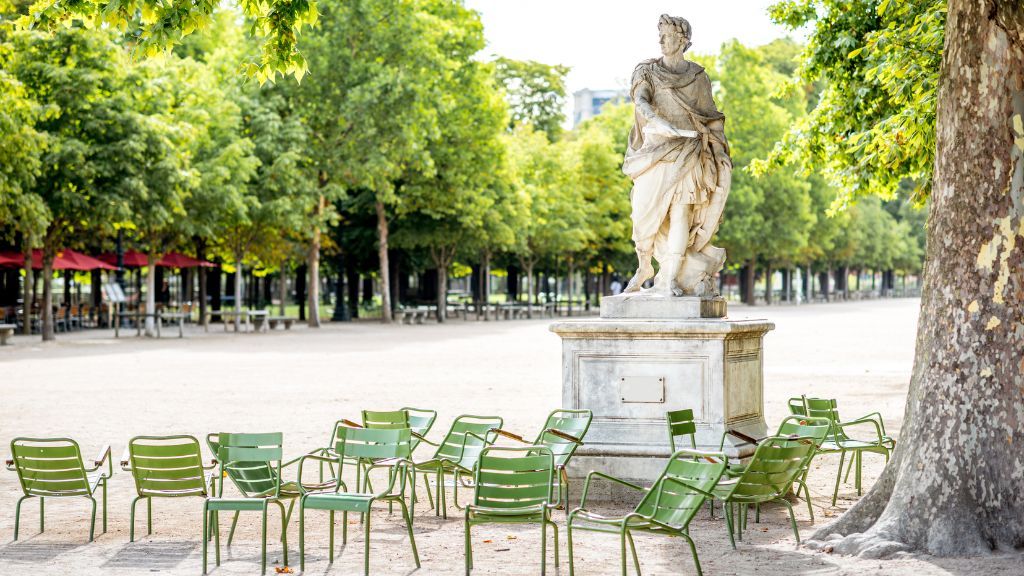
The traditional dishes you can taste in Paris
Croissant - these tender, buttery buns with a light crispy crust are a classic Parisian breakfast. Freshly baked croissants can be found in every bakery and cafe in the city.
Pot-au-feu is a warming and nutritious dish made from soft beef meat, vegetables, and aromatic spices, cooked for several hours over low heat.
Ratatouille - this vegetable dish made of eggplant, zucchini, tomatoes, onions and garlic is a favorite side dish for many Parisian dishes.
Onion soup (Soupe à l'oignon) is a thick, aromatic soup with caramelized onions, flavored with slices of toasted bread and cheese.
Crème brûlée is a traditional dessert with delicate vanilla cream covered with a caramel crust, which is a classic end to a Parisian lunch.
These traditional dishes are an integral part of Parisian cuisine and culture, and they should definitely be on the menu of anyone visiting this beautiful city.
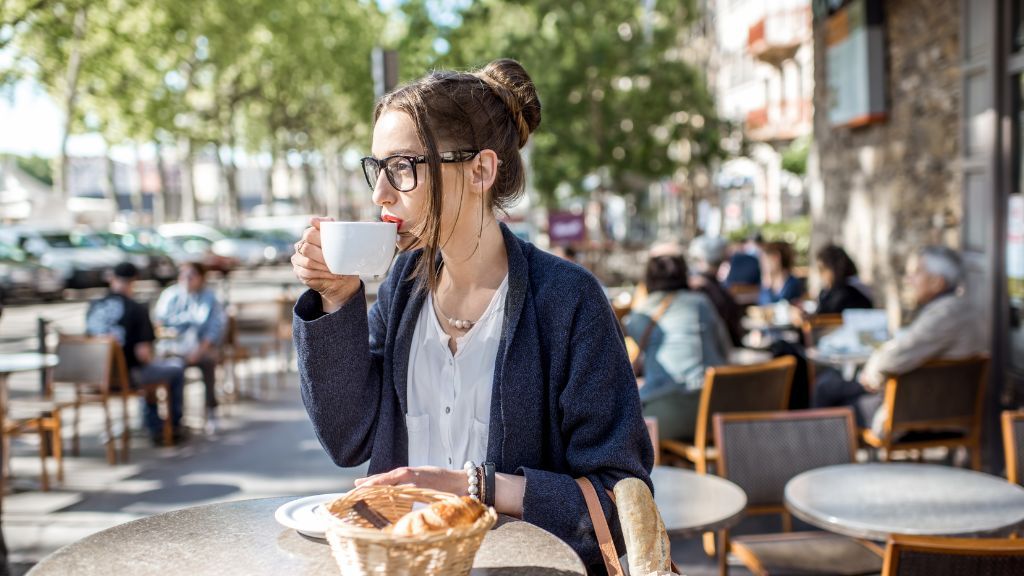

Avignon
Avignon is an ancient city in the south of France, located on the banks of the Rhone River. This city has a rich history and architectural monuments that attract tourists from all over the world.

Lyon
Lyon is an incredible city in France that is located at the intersection of the Rhone and Saône rivers, Lyon is the second largest city in the country after Paris.
The city combines rich history, art, architecture and gastronomy, making it one of the most attractive destinations in France for travelers.

Marseille
Marseille is one of the largest and most important port cities in France, located on the Mediterranean coast in the south of the country. The city has a rich history and a unique culture that combines Mediterranean, French and Arabic traditions.

Bordeaux
Bordeaux is a charming city in the south-west of France, famous for its wine traditions, architecture and romantic atmosphere. Located on the banks of the Garonne River, Bordeaux is one of the most important wine regions in the world, known for its elegant red wines.

Nantes
Nantes is a charming city in the west of France, located on the banks of the Loire River. Once a powerful industrial center, today Nantes has become an attractive tourist destination that combines a rich history, modern architecture and a lively cultural scene.

Montpellier
Montpellier is one of the most dynamic and attractive cities in the South of France, which impresses with its unique atmosphere and combination of antiquity and modernity.
Located just a few kilometers from the Mediterranean Sea, Montpellier impresses with its harmonious combination of medieval architecture and modern urban development.

Lille
Lille is a charming city in the north of France, known for its rich history and unique architecture. Located at the crossroads of cultures, Lille combines Flemish and French traditions, creating a special flavor.

Rennes
Rennes is a dynamic and culturally rich city in northwestern France, which is the capital of the historic Brittany region. It is one of the oldest cities in the country, combining medieval architecture and modern urban trends.

Nice
Nice is a charming coastal city on France's Cote d'Azur that fascinates with its unique atmosphere and natural beauty. Located on the coast of the Mediterranean Sea, it attracts millions of tourists every year.

Strasbourg
Strasbourg is a unique city on the border of France and Germany, which impresses with its unique architecture, rich history and cozy atmosphere.
The heart of Strasbourg is Grand Ile, the historic center of the city, which is noted for its incredible beauty and harmonious combination of French and German styles. Here you can see elegant red-tiled buildings, quaint half-timbered facades, medieval cathedrals and cozy canals.


 Dbamy o Twoją prywatność
Dbamy o Twoją prywatność